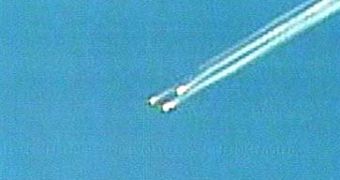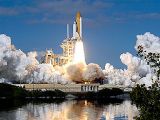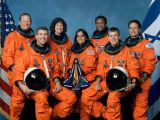Only four days ago, the world remembered the events which took place 22 years ago, when the space shuttle Challenger disintegrated into the Earth's atmosphere during a failed launch attempt. Through an unfortunate chain of events, five years ago, the space shuttle Columbia suffered a similar outcome during a re-entry into the Earth's atmosphere, leading to the death of another 7 crew members.
The STS-107 mission, launched into space onboard the space shuttle Columbia, on January 16th, 2003, after being delayed for a record breaking 18 times, totaling more than two years of failed attempts to launch. NASA seemed to have forgotten about the Challenger disaster, which was followed by an investigation pointing towards the highly incapable management system of the U.S. space agency, and started acting up again in its inability to communicate efficiently.
The launch took place without any problems, although only six months earlier another delay took place and it was highly publicized at the time; this time, the delay was related to the shuttle's propellant distribution system, which presented several structural defects. The initial investigation quickly turned its attention to the fuel distribution system after the disintegration incident, but was later proven that it was not related to the disaster.
As the Columbia space shuttle cleared the launch pad, a piece of insulating foam broke off the external fuel tank and hit the left wing of the spacecraft. Immediately, the risk-management team from NASA pointed that the shuttle might have suffered a catastrophic malfunction during the process, however NASA management failed to take into consideration the engineers' concern and did not inform the crew of the potential hazard.
On February 1st, 2003 at 8:00:00 EST, the Columbia space shuttle began the procedures for re-entry into Earth's atmosphere, unknowing that there was a hole gapping in the left wing as a result of the impact with the briefcase-sized insulating foam piece. Tremendous friction with the air during the descent forced high-temperature gases into the wing, weakening its internal structure in the process. 40 minutes into the descent rendered the sensors in the wing into an inability to function. It is calculated that by this time the temperatures inside the left wing would have reached more than 1,500 degrees Celsius. At 8:59:32 EST, the commander of the space shuttle sensed something was not right, and attempted to communicate with the Flight Control Team. Unfortunately, by the time he even began to speak, the transmission failed suddenly, which was probably the time when Columbia suffered a critical structural failure and disintegrated under the immense forces created by air friction.
By the time NASA found out what cut the transmission short, residents of north central Texan had already reported of hearing a loud bang, followed by smoke trails and debris falling freely from Columbia. The initial investigation immediately focused on the strange pattern of loss of the sensors and hydraulic systems in the spacecraft's wing, but investigators still refused to believe that the incident had been caused by the foam impact. Six months later foam impacts conducted by the Southwest Research Institute proved in an experiment that a piece of foam measuring 41 by 42 centimeter, weighing just under a kilogram, can produce a serious gap in the Reinforced Carbon-Carbon panels.
Also, the investigation team concluded that if NASA's management had taken into consideration the engineer's concerns and had acted in time, the crew could have been rescued, or a repair mission could have been implemented. However, this was not the case and another seven lives were lost due to inefficient management. The crew of STS-107 was composed of: Rick D. Husband, William C. McCool, Michael P. Anderson, Ilan Ramon, Kalpana Chawla, David M. Brown and Laurel Clark.

 14 DAY TRIAL //
14 DAY TRIAL // 

